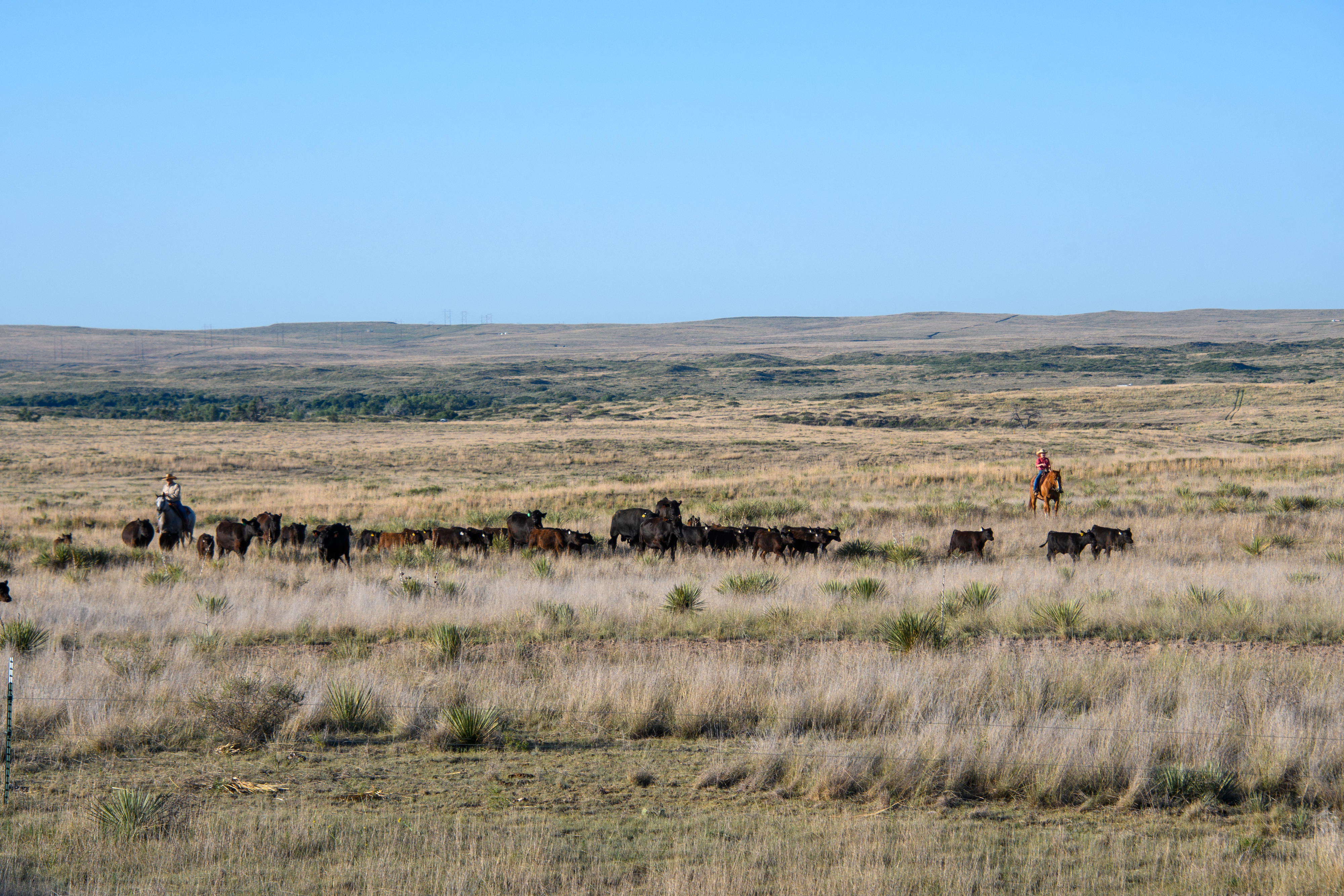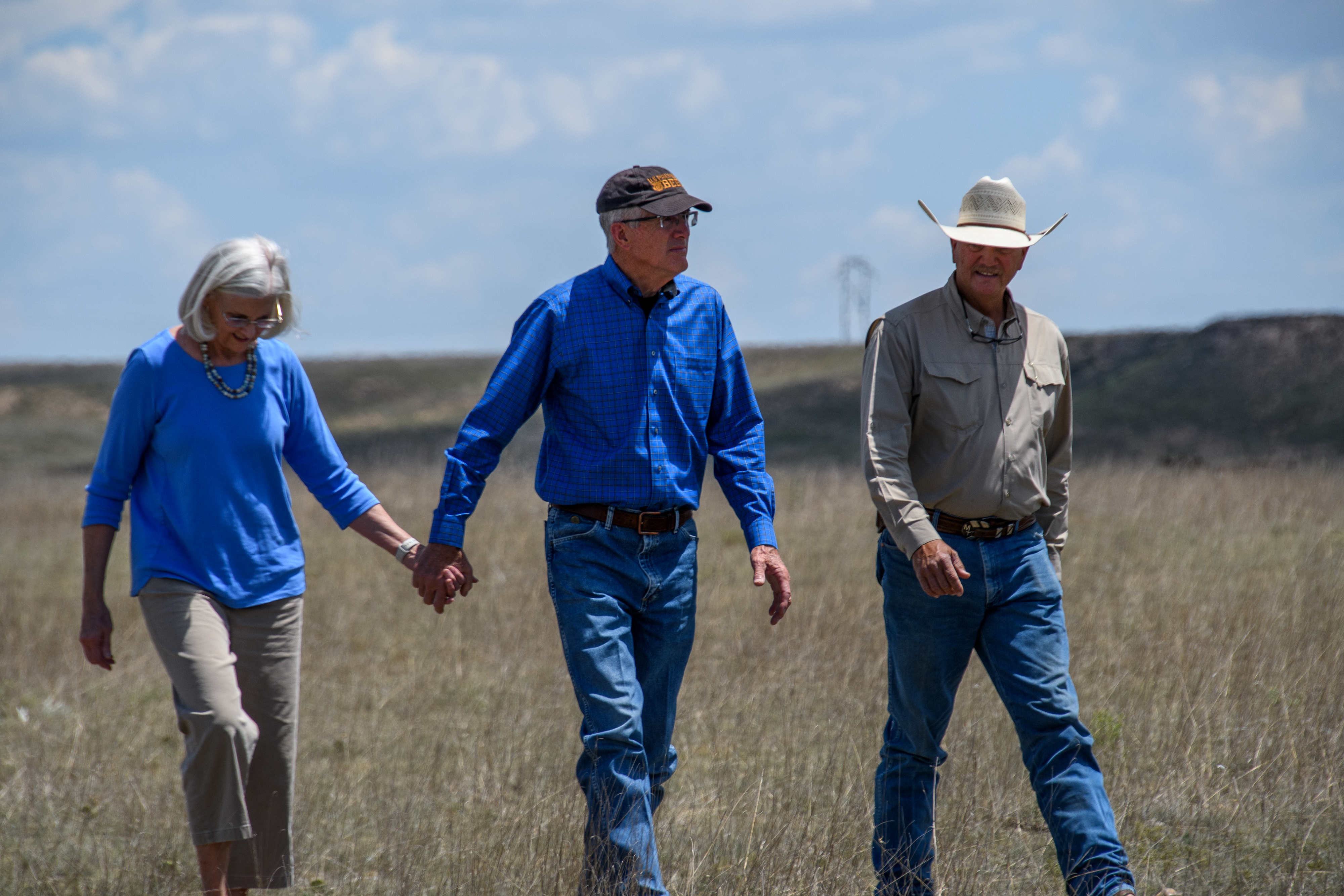Connect with Range & Pasture:
The Transformation of Blue Ranch

On the rolling sun-scorched prairies of northwestern Texas, rain is more likely a distant memory than a current event. For a crop of any kind to grow, everything has to come together just right. Only then does the ground yield, and then only reluctantly.
As a lifelong Texas cattleman, Rex McCloy knew what he and his wife, Susan, were getting into when they purchased Blue Ranch, a 19,000-acre operation near Dumas, in 2013.
“It was a good ranch,” he says. “The fences had been cleaned out by the previous owner, but there were upgrades that were needed. We needed to do extensive work on the water system; some of the wells worked, but just barely. It was obvious we had to make some renovations if we were going to handle large numbers of cattle.”
At the urging of the Natural Resources Conservation Service, the McCloys started the transformation of Blue Ranch with an overhaul of the existing water infrastructure. They added 120,000 gallons of water storage capacity, along with more than 40 miles of water lines and pumps serving individual 3,000-gallon troughs.
But their plans involved more than just updating infrastructure and tidying up fences. They wanted the ranch to serve as an example of a sustainable, regenerative cattle operation incorporating best practices for pasture management, habitat enhancement, rangeland restoration and water usage. For that, the McCloys knew exactly who to call.
Ranch manager Mike Turner knows the northwest Texas ground like other people know the streets of the neighborhoods in which they were raised, and he recognized the challenges the McCloys would face in their pursuit of operational and environmental excellence. To start, years of heavy use and inattention had created bogs in low-lying areas, blocking perennial creeks and springs.

“We had a large canopy of black willow, so much so that the deer had a hard time walking through,” says Turner. “We did mechanical controls, then came back with individual plant treatments using a 2,4-D and Tordon 22K prescription. We’re a cotton county, so I can’t apply 2,4-D after May 1, so I’ve also used Surmount herbicide. I’ll definitely use Surmount again; it gives us good cholla and prickly pear control, again with no 2,4-D.”
Next on Turner’s to-do list was freeing the water to return to its natural path.
“We rechanneled the original stream bank and put the water back on its original path,” Turner says. “Once we did that, our two perennial springs started flowing again, we opened up more corridor area for wildlife, and we had more water flowing than we’d ever had before.”
More water meant the potential for a larger herd. Historically, the ranch had sustained 300 to 350 cows, with lower numbers during drought years. The McCloys wanted to increase those numbers and have enough forage available during wetter years to handle several hundred head of stocker cattle.
To create the additional capacity while still operating according to their original intent, the McCloys switched from the three-pasture format used by the previous operator to a high-density, low-frequency grazing system utilizing 62 grazing cells of approximately 320 acres each. Instead of reseeding to renovate the tired ground, Turner relied on the natural seed-spreading ability of the herd.
“The seedbank was there,” says Turner, “We just had to bring it back through animal impact. One thing we did was put our entire herd together into one; graze a large herd on a small landscape and you mimic what the bison did for thousands of years. We were able to use forage better, and we got more hoof action. By year 3, we were seeing a lot of the tall prairie grasses come back; by year 5, the growth was exponential.”
Turner says the cell-grazing system helps maximize animal impact for short-duration grazing and provides maximum rest periods for the grazing cells.
“Ideally, all cows graze for about six days in each cell,” he says, “and we try to graze each cell in one calendar year. That way, at any given time 90 to 95 percent of the ranch is being rested.”
McCloy and Turner base cell stocking rates on forage biomass. It’s a delicate balancing act requiring attention to data as well as faith in the weather; while the average annual rainfall may be 16 to 18 inches, recent years produced an average just over 12 inches.
Their calculations – and their faith – have paid off. Multi-year forage inventories show forage production going from 1,200to 1,300 pounds of biomass per acre to 2,500 pounds per acre – and that’s after a three-year drought. Cow-calf stocking rates have increased from about 350 pairs to about 500 pairs, thanks to the high-density, low-frequency grazing system. In wet years, Blue Ranch can also handle 400 or more head of stocker cattle.
In addition to improved water flow in the two perennial creeks, air quality is up due to better grass management and increased biomass coverage. But Turner and the McCloys are perhaps most excited about the return of the beloved ice-cream grasses.
“Once we implemented the rotational grazing system and maximum rest periods for the paddocks” says Turner, “we noticed the growth eastern gama grass, switchgrass, Indian grass and other tall prairie grasses like bluestem.”
The National Cattlemen’s Beef Association has recognized the emphasis Blue Ranch places on stewardship and sustainability with the Region 4 Environmental Stewardship Award, a program for which Corteva Agriscience is the longest-tenured sponsor. Today, Blue Ranch serves as a model of agricultural sustainability, and a teaching ranch that attracts educators, students, Extension specialists and other ranchers from across the state and around the country.

“The McCloy family and Mike Turner have demonstrated the potential for owners and managers to craft and execute a vision for rangeland improvement,” says David Lust, PhD, West Texas A&M University. “Their results are apparent to everyone who visits. The ranch is a trusted resource that shares its success by providing outstanding educational opportunities to the community.”
Rex McCloy is a bit more humble.
“Above all,” he says, “our mantra is ‘do no harm.’”
Surmount, Tordon® 22K, Tordon® 101M and Tordon® K are Restricted Use Pesticides. Always read and follow label directions.